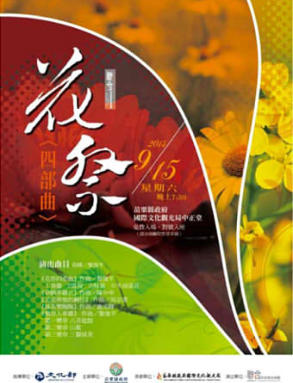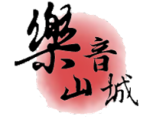Movement 1:
Spring Vine (String and Wind Ensemble)
In
the
first
movement,
through
the
delicate
transition
of
modes
and
tonalities,
we
seem
to
acquire
a
clear
image
that
blossoms
are
bloom
-
ing
and
creatures
are
waking.
The
flowing
compound-meter
tempo
and
meticulously
interwoven
semiquavers
display
a
multi-color
gradation.
As
we
listen
to
the
melody,
we
may
have
an
illusive
yet
plain
impres
-
sion
that
we
are
lying
on
the
grass,
looking
at
the
white
clouds,
and
lis
-
tening
to
the
birds
chirping.
The
rich
diversity
of
this
movement
appears
to
imply
that
our
life
can,
and
should,
be
as
colorful
as
the
in
-
finity of music.
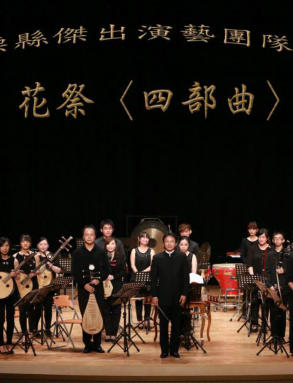
Movement 3:
Autumn Chrysanthemum (String and Wind Ensemble)
In
Taiwan,
the
weather
in
autumn
is
always
cool
and
comfortable.
During
this
season,
chrysanthemums
are
vigorously
spreading
their
bright
polyphyllus
yet
revealing
a
slightly
calm
and
elegant
attitude.
The
tone
and
melody,
instead
of
showing
any
drastic
ascending
or
descending
scale,
present
a
light
yet
lingering
charm,
which
is
exactly
just
the
same
as the fragrance of chrysanthemum.
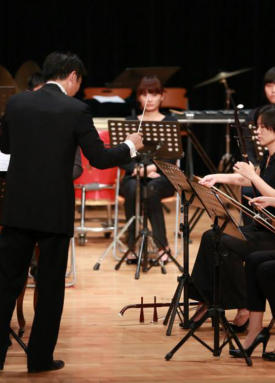
Movement 4:
Red Persimmons (Plucked-String Ensemble)
Persimmon
is
a
common
fruit
in
the
Hakka
culture.
We
can
eat
it
while
it
is
still
fresh,
and
we
can
also
make
dried
persimmons
as
delicious
snacks
or
the
ingredient
for
a
persimmon
chicken
soup.
The
ripened
persimmon
hanging
on
the
branch
looks
like
a
glittering
ruby.
In
the
course
of
music,
we
should
feel
the
persimmons
ripening
gradually.
Before
the
end
of
the
movement,
a
faintly
nervous
atmosphere
reminds
us
that
the
birds
are
attempting
to
peck
the
persimmons,
while
the
old
farmer is trying to stop them anxiously.
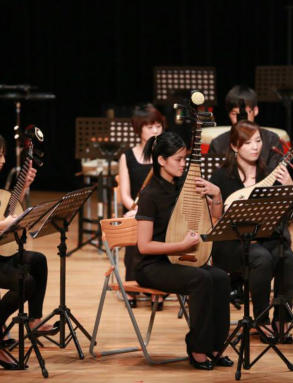
Movement 2:
Summer Lotus (String and Wind Ensemble)
At
the
start
of
this
movement,
we
can
hear
that
lotus
leaves
are
gently
wavering
in
the
warm
breeze.
Then
the
melody
infers
that
flower
buds
are
striving
to
spread
the
tender
and
lovely
petals.
As
all
the
lotus
blos
-
soms
come
to
full
bloom
at
the
end
part
of
this
movement,
we
may
per
-
ceive the floral elegance and pure beauty of summer.
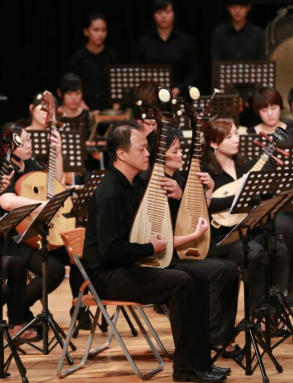

Floral Festival Tetralogy
Mr.
Lee
composed
this
four-part
suite
to
illustrate
the
beauty
of
four
seasons
in
Taiwan.
The
sections
in
each
part
are
named
according
to
the
traditional
Chinese
twenty-four
solar
terms.
Of
all
the
solar
terms,
there
are
8
major
terms:
the
Beginning
of
Spring,
the
Spring
Equinox,
the
Beginning
of
Summer,
the
Summer
Solstice,
the
Beginning
of
Autumn,
the
Autumnal
Equinox,
the
Beginning
of
Winter,
and
the
Winter
Solstice.
In
the
intervals
in-between,
there
are
16
more
minor
solar
terms,
including
Rain
Water,
the
Waking
of
Insects,
Pure
Brightness,
Grain
Rain,
Grain
Full,
Grain
in
Ear,
Slight
Heat,
Great
Heat,
the
Limit
of
Heat,
White
Dew,
Cold
Dew,
Frost’s
Descent,
Slight
Snow,
Great
Snow,
Slight
Cold,
and
Great
Cold.
This
tetralogy
demonstrates
a
whole
new
sense
of
life and attitude toward our environment, which stirs up a remote resonance deep in our heart.
